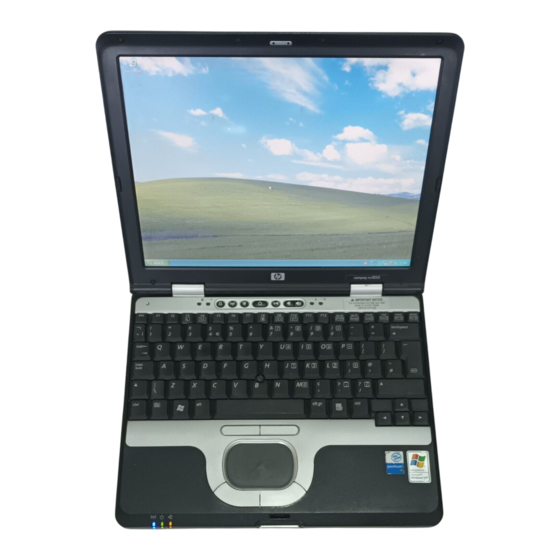
HP Compaq NC4010 Security Manual
Authentication technologies and suitability to task
Hide thumbs
Also See for Compaq NC4010:
- Maintenance and service manual (224 pages) ,
- Features manual (40 pages) ,
- Setup manual (12 pages)
Table of Contents
Advertisement
HP ProtectTools:
Authentication technologies and suitability to task
Introduction......................................................................................................................................... 2
Authentication technologies in HP ProtectTools ........................................................................................ 2
Password authentication ....................................................................................................................... 3
TPM embedded security chip authentication............................................................................................ 4
Smart card authentication ..................................................................................................................... 4
USB token authentication ...................................................................................................................... 5
Biometric fingerprint authentication ........................................................................................................ 6
Virtual token authentication ................................................................................................................... 7
Feature Comparison and suitability to task.............................................................................................. 7
Suitability to Task................................................................................................................................. 8
Conclusion.......................................................................................................................................... 9
For more information............................................................................................................................ 9
Advertisement
Table of Contents

Subscribe to Our Youtube Channel
Summary of Contents for HP Compaq NC4010
-
Page 1: Table Of Contents
HP ProtectTools: Authentication technologies and suitability to task Introduction... 2 Authentication technologies in HP ProtectTools ... 2 Password authentication ... 3 TPM embedded security chip authentication... 4 Smart card authentication ... 4 USB token authentication ... 5 Biometric fingerprint authentication ... 6 Virtual token authentication ... -
Page 2: Introduction
Authentication technologies in HP ProtectTools HP client PCs support a breadth of authentication devices in the Microsoft® Windows® operating system environment, as well as the pre-boot environment. This breadth of support for authentication devices gives customers a range of choices on which authentication technology to deploy. -
Page 3: Password Authentication
Credential Manager for HP ProtectTools currently supports the following authentication technologies: Credential Password Trusted Platform Module (TPM) Smart card USB token Biometric Fingerprint Virtual token Password authentication Passwords are the most common form of user authentication currently in use. Passwords require little or no unique infrastructure to implement and are useful for deterring casual access. -
Page 4: Tpm Embedded Security Chip Authentication
HP also utilizes TPM authentication to enhance Drivelock security, by utilizing the TPM to generate a strong 2048 bit Drivelock password. In addition to improving security, this feature also improves overall system usability as authenticating to the TPM during boot also unlocks Drivelock, effectively linking the hard drive to the platform. -
Page 5: Usb Token Authentication
Note: In addition to PKI support, HP ProtectTools also provides the means to more securely store user authentication credentials like passwords and therefore does not require additional PKI infrastructure elements. -
Page 6: Biometric Fingerprint Authentication
PKI deployments in a corporation and provide functionality such as email signing and data encryption. Note: In addition to PKI support, HP ProtectTools also provides the means to more securely store user authentication credentials like passwords and therefore does not require additional PKI infrastructure elements. -
Page 7: Virtual Token Authentication
4. Registry 5. USB drive keys Once a token has been created, Credential Manager for HP ProtectTools can use it to authenticate the user. Example: A user can create a virtual token on a USB drive key, and configure Credential Manager for HP ProtectTools to require that virtual token for authentication. -
Page 8: Suitability To Task
Suitability to Task Each authentication device provides a tradeoff between ease of use, administrative complexity and level of security. The following graph visually represents where these devices fit in the administrative complexity versus level of security spectrum. Three factor (Biometric, Token and PIN) Hardware Token (Smartcard, USB) with PKI... -
Page 9: Conclusion
© 2005 Hewlett-Packard Development Company, L.P. The information contained herein is subject to change without notice. The only warranties for HP products and services are set forth in the express warranty statements accompanying such products and services. Nothing herein should be construed as constituting an additional warranty.








Need help?
Do you have a question about the Compaq NC4010 and is the answer not in the manual?
Questions and answers